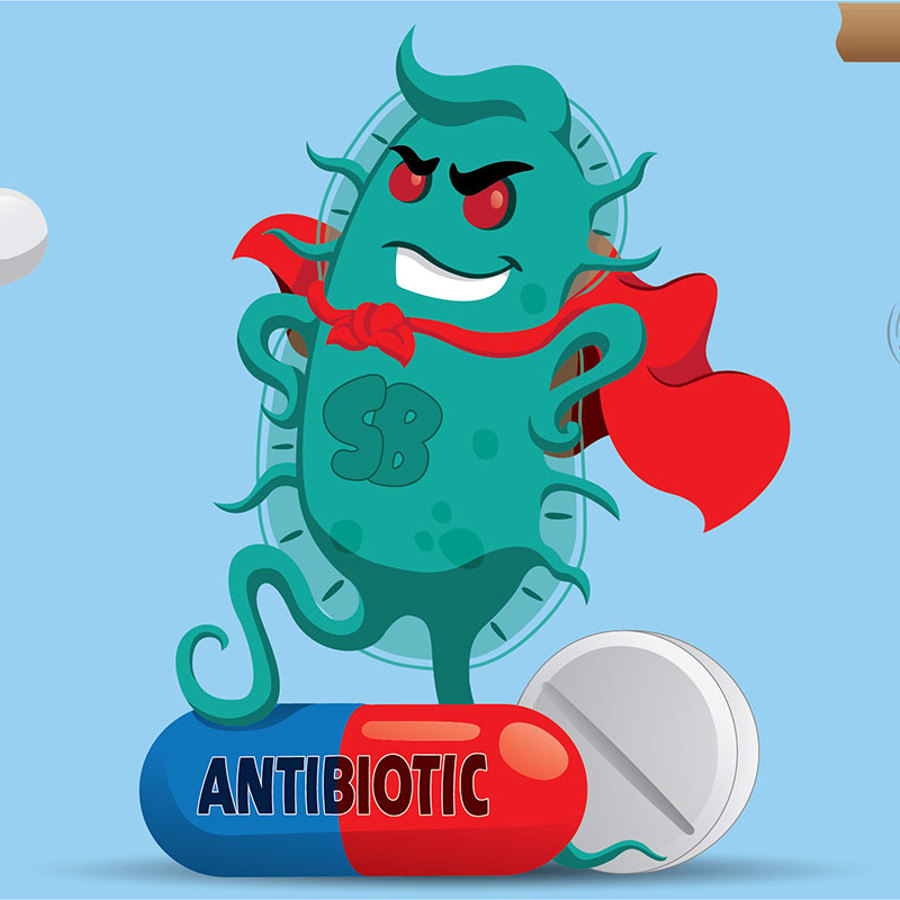
Could humans develop mutational resistance, just as bacteria have developed antibiotic resistance?
December 15, 2006

- Related Topics:
- Mutation,
- Evolution,
- Quirky questions,
- Editor's choice
A curious adult from Greece asks:
“Due to slight changes in their genetic makeup, bacteria have been able to successfully develop antibiotic resistance. Would it be possible for humans to develop this kind of resistance as well? Could we make this process work for us and become resistant to, for example, the mutations caused by cigarette smoke or UV light?”
Bacteria are amazingly adaptable little critters. They are constantly evolving to become better suited to their environment.
This is what makes bacteria able to become resistant to antibiotics. Over time they are able to thrive in the presence of drugs that used to kill them. They simply evolve or borrow better genes that outsmart the drugs.
Like bacteria, we humans can (and do!) develop resistance to harmful things in our environment. In fact, humans have become resistant to UV light from the sun, as you asked.
But, as helpful as it might seem, we can't really force this process to work for us for specific traits. There is no 'magic gene pill' to make us resistant to things like cigarette smoke or UV light.
Instead, the way to get there is by evolution. And evolution is definitely not a magic pill! Even if we could control evolution to make us resistant, we probably wouldn't want to.
Why not? Because for evolution to happen quickly enough to be useful within a human lifetime, millions of people would need to die. And when it happens more slowly, it would take thousands of years to get there.
Let's take a closer look at what makes bacteria so good at evolving to become resistant to antibiotics. Then we can examine what this sort of path to genetic resistance would look like in people.
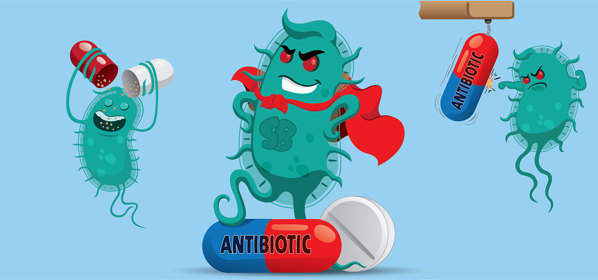
New Antibiotic, who dis?
Bacteria used to be the curse of mankind. They wiped out more people than any war or natural disaster. Then the first antibiotic, penicillin, was discovered…
Thanks to antibiotics we don't have to worry about dying from things like an ear infection or strep throat. Many scientists and doctors believe that antibiotics are the single most important medical discovery of all time.
But times are changing. Many bacteria have become resistant to antibiotics. In some cases the medicines no longer work. Now, many doctors see antibiotic resistance as the biggest threat to global health today.
So how do the bacteria become resistant? And why do they seem to be so much better at evolving than we do?
Basically, it comes down to the fact that evolution happens a lot faster for bacteria than it does for us. Bacteria have two advantages that allow them to evolve quickly.
One is that they grow really fast. The other is that they can share DNA with each other, even between species. Let's take a look at how these features help speed up evolution.
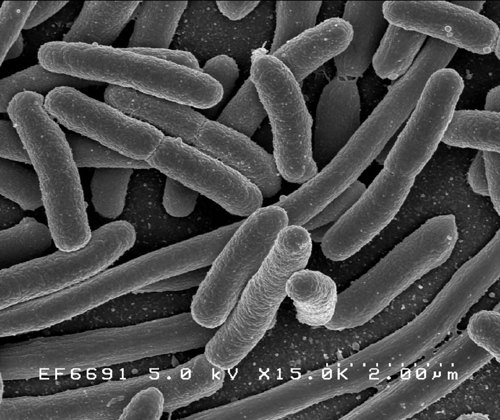
Sharing is Caring
Bacteria have a short generation time. This means they grow up and make babies pretty quickly. It takes humans on average 20 years to grow and have kids. It can take a bacterium just 20 minutes!
Here are some numbers to show what this means. Let's say it took 20 years for bacteria to become resistant to penicillin (a common antibiotic). This is one human generation.
For the bacteria, though, it could be as many as 525,000 generations. On the other hand, it takes us about 10 million human years to produce 525,000 generations!
So a helpful mutation in people would take a long time to spread. Bacteria can pass their helpful DNA changes to their "children" much more quickly.
The other advantage of bacteria has to do with how they pass their DNA around. Humans can only pass DNA down to their children. This means it can take many generations before some new trait is seen.
Bacteria, though, can pass DNA to each other. Even between different species! This means helpful DNA can spread through bacteria very quickly.
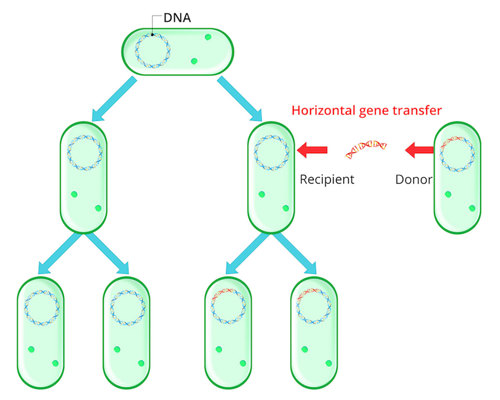
But it also means that bacteria can get genes that help protect them from antibiotics from other species. Here's why this is important.
Not all types of antibiotics work on all types of bacteria. Different species of bacteria are naturally resistant to different kinds of antibiotics.
Let’s do a thought experiment. Imagine we have two species of bacteria living together. One species isn't affected by penicillin because it has a penicillin resistance gene. The other species doesn't have that helpful resistance gene.
Occasionally these two species pass genes to each other. And sometimes it is the resistance gene that gets passed.
Now all of these bacteria are hit with a dose of penicillin. The resistant species is fine. But so are the lucky few of the other species who got the resistance gene.
These bacteria did not need to develop resistance on their own. They got it as a kind of 'genetic gift' from a naturally resistant species.
This DNA sharing makes evolution happen much faster because you don't have to luck into a helpful mutation. The resistance gene is out there and it is just a matter of getting it.
From there Darwin's idea of 'survival of the fittest' goes to work. When the bacteria are treated with an antibiotic, the resistant ones survive. All the others are wiped out.
The resistant bacteria then go on to make resistant babies. And they can pass their resistance genes to other bacteria around them. Eventually only the resistant bacteria, the ones that are hardest to treat, will remain.
This can happen pretty fast in bacteria. Fast enough that both the development of antibiotics and the spread of antibiotic resistance that has followed happened within a human lifetime (the first antibiotics were used to treat people in the 1940s).
But as good at evolving resistance as bacteria are, don't forget that this comes at a huge cost for individual bacteria. While the bugs with resistance to the drug will survive, millions (or billions, even trillions!) that are not resistant will die. Only then will the few remaining bacteria go on to start a new population, sharing the antibiotic resistance with their offspring.
Now imagine such a process in humans. As happens with bacteria, when evolution happens quickly in humans it comes at a huge cost to the population as a whole.
The Bubonic plague and resistance
A powerful example to consider is the plague. The Bubonic plague (also known as Black Death) was one of the most deadly disease outbreaks in history. It wreaked havoc on the people of Europe in the mid-1300s.
The medicines of Medieval Europe could do nothing to stop the bacteria that causes this plague. One-third of Europe's population at the time died within 5 years -- that's over 25 million people! And it kept killing people for decades.
It is possible that some lucky people were resistant to the plague. A mutation in the gene called CCR5 may have allowed them to survive.
Scientists have noticed that, around 700 years ago, the fraction of Europeans with a mutant version of CCR5 went from about 1 in 20,000 to about 1 in 101. Only something very drastic would cause such a jump.
Well, around 700 years ago the Black Plague hit Europe, a very drastic force indeed! Elsewhere around the globe the frequency of the CCR5 mutation remained very low.
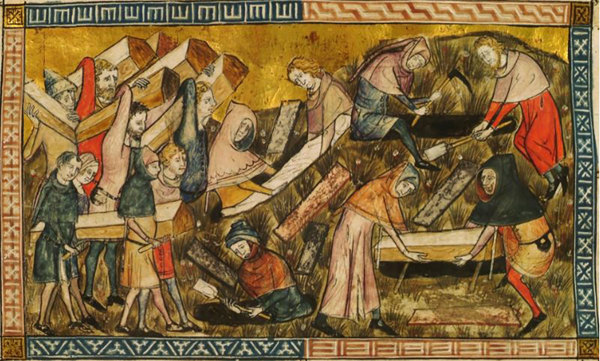
The broken version of the CCR5 gene may also provide resistance to another disease -- HIV. Some people are genetically resistant to HIV. When scientists looked at their DNA, they found a difference in their CCR5 gene: People who were sensitive to HIV had a working CCR5 gene, in people who are resistant the CCR5 gene was broken.
As you might expect, people of European descent are most likely to have resistance to HIV provided by the CCR5 mutation.
So when evolution of resistance happens fast, the cost to the population as a whole is deadly. Many must die for the resistance genes to spread quickly through the population. It takes something drastic, like a nasty disease outbreak for humans or a whopping dose of penicillin for bacteria, for this to happen.
But without all of this death, evolution is just too slow. Too slow to be helpful in the short term, or even for generations and generations to come. You have to wait for the right beneficial mutations to happen by random chance. Then you have to wait for the mutated gene to travel through the population naturally. For example, human skin pigments evolved to provide genetic resistance to UV light after our common ancestor lost its body hair.
Of course, one day we may be able to change our DNA to make ourselves resistant. This has the disadvantage of not discovering new ways to become resistant. But it has the advantage of not killing off hundreds of millions of people to get there.
Until then we'll have to develop resistance through the process of evolution, letting nature and time run their course -- and hopefully without any devastating disease outbreaks along the way!

Author: Dr. Bronwyn MacInnis
When this answer was published in 2006, Bronwyn was a postdoctoral fellow in the Department of Molecular and Cellular Physiology, studying the genetics of behavior, learning, and memory in Miriam Goodman's laboratory. She wrote this answer while participating in the Stanford at The Tech program.
 Skip Navigation
Skip Navigation
